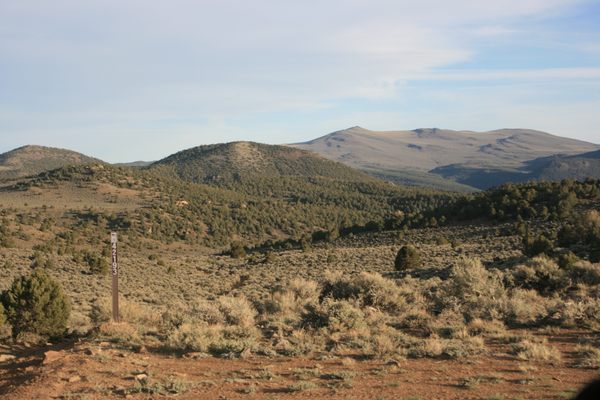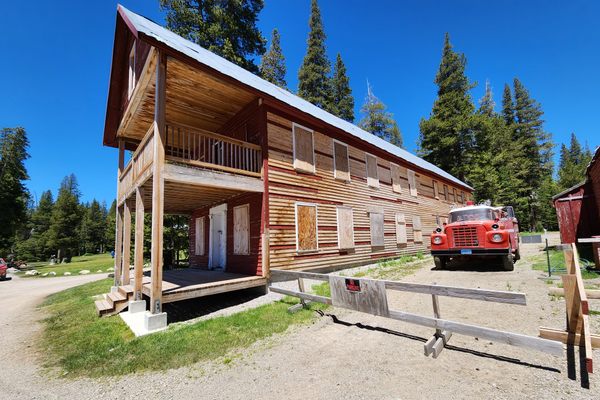Chemung Mine
An abandoned early 20th-century gold mine in a spectacular setting overlooking Bridgeport Valley and the Sierra Nevada.
Gold was struck here in 1909 by Stephen Kavanagh, some three miles west of the then-booming town of Masonic. Kavanagh named the strike the Chemung (pronounced “sheh-MUNG”) in honor of his hometown of Chemung, Illinois, but didn’t share in the proceeds as he was just an employee of the mining company.
The ore was reportedly of good quality. However, the mine was overshadowed by those at nearby Masonic and Bodie, and mismanagement and legal issues hindered production. The mill was torn down and rebuilt three times. Costs were also high: ore concentrates had to be transported to Bodie, and even though trucks were available by the 1930s, the roads had deteriorated substantially. The depressed price of gold throughout the 1920s also didn’t help.
The main activity had all ceased by 1938, but in the 1950s and 1960s, an itinerant prospector, Elton “Heinie” Heinemeyer, continued poking around the site without ever striking it rich.
Reports tell of a “poltergeist,” active only on Saturday nights, who is said to be the ghost of a mine owner who fell—or pushed—down a shaft. Although showing the effects of decades of weathering and vandalism, the ruins are still impressive, especially the old mill structure.
Know Before You Go
The easiest way in is on Masonic Road, a graded road that intersects California State Route 162 about 3.8 miles south of Bridgeport, Califonia (junction at 38.30935 N, 119.2141 W). Follow Masonic Road for 5.2 miles; the Chemung Mine will be obvious on the right.
Although graded the road is steep and subject to washouts; high clearance may be necessary.
The mine workings include open trenches that followed zones of mineralization. These have been covered with grates for safety, but nonetheless remain exceptionally hazardous, especially for children and pets.
Of course, it not advisable to enter the structures. Not only are the buildings at the point of collapse themselves, but hantavirus from rodent droppings is a risk in such ruins.



































Follow us on Twitter to get the latest on the world's hidden wonders.
Like us on Facebook to get the latest on the world's hidden wonders.
Follow us on Twitter Like us on Facebook